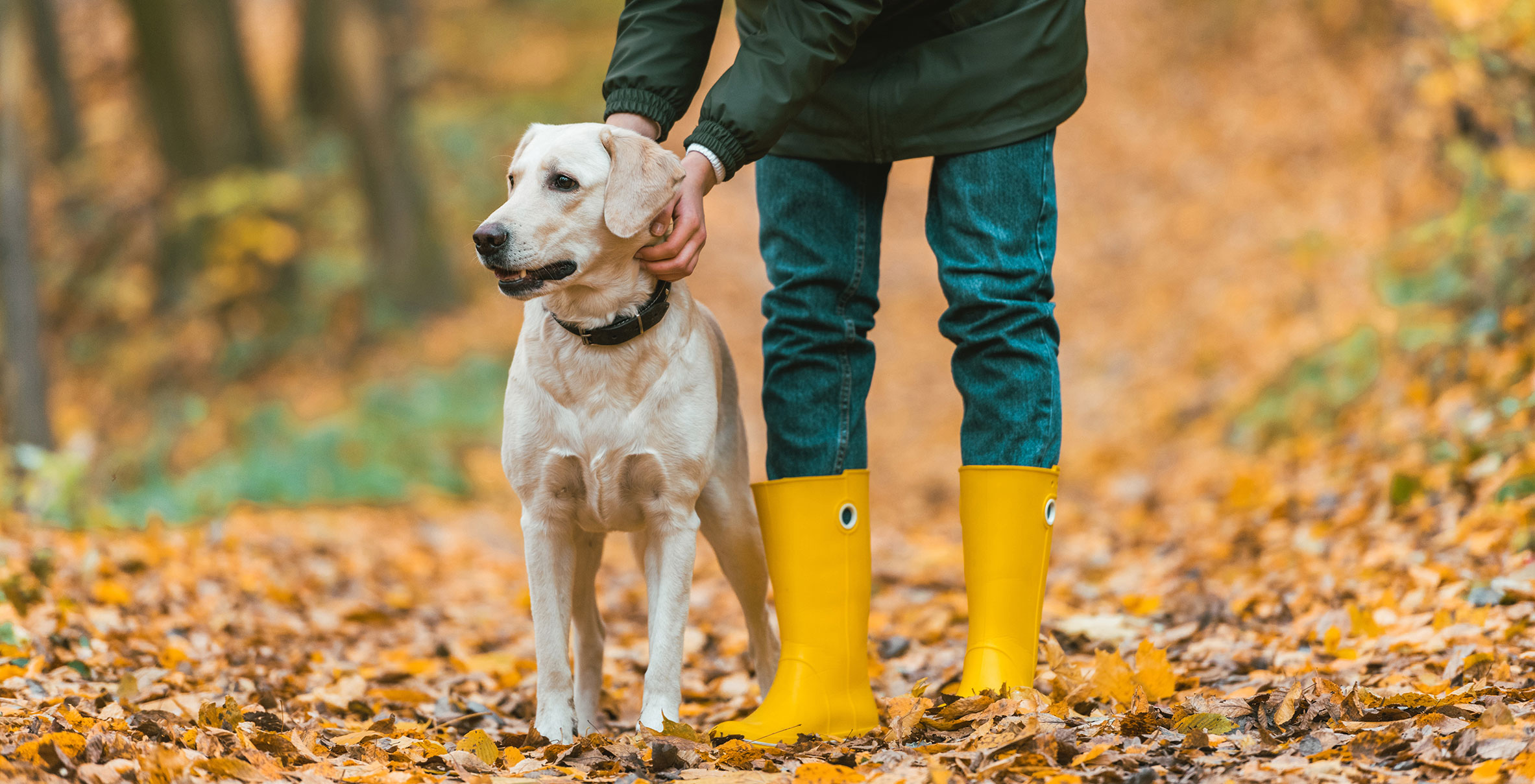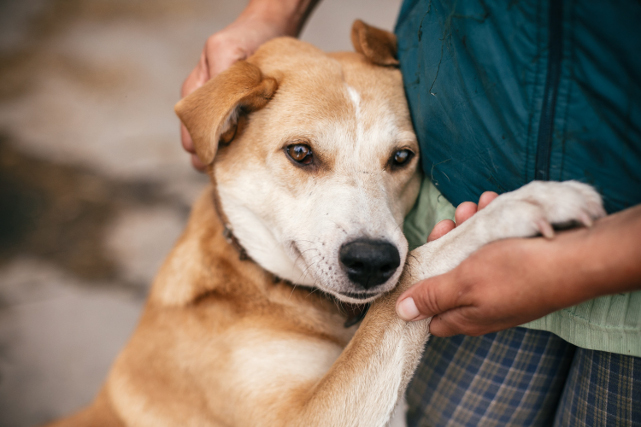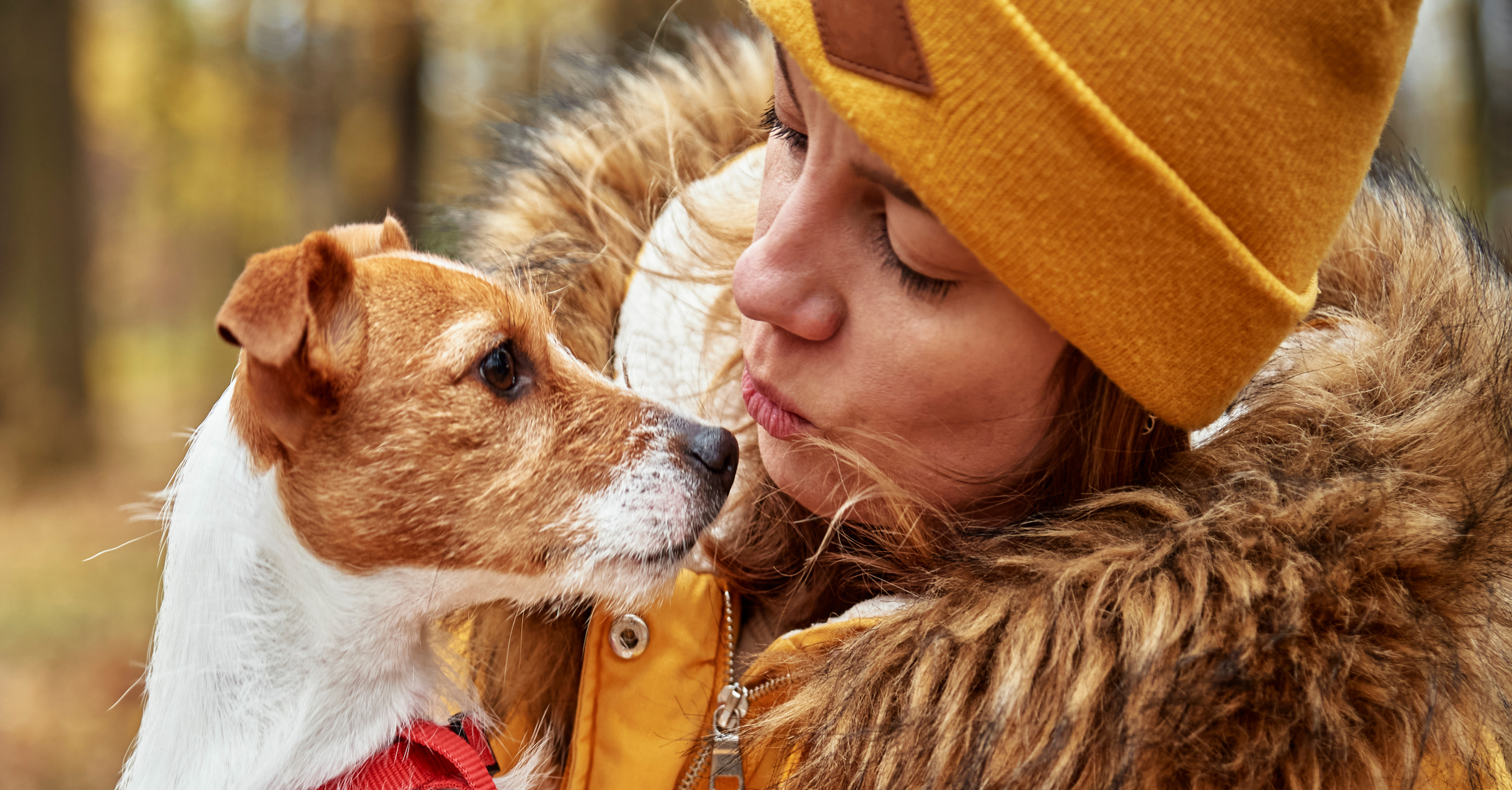The leaves are changing, the air is cooling, and the fall season is well underway. This is a beautiful time of year to get outside with your dog, whether on a picturesque autumn hike or just a stroll through the park. However, there are a few season-specific hazards to dogs in the fall, and being aware of them can go a long way in avoiding the time, hassle, and stress of your dog having a medical issue.
Learning about these autumnal hazards will give you the knowledge you need to prevent accidents or emergencies, and ensure your pup is safe and healthy in the coming months. So what should you keep an eye out for especially? Here’s our list.
1. Certain mushrooms
Most dogs are partial to keeping their nose to the ground on walks. Most dogs are also known for sniffing, tasting, and potentially eating just about anything they come across. While dogs have hardy digestive systems that can handle a lot, there are some species of mushrooms in BC that can pose very serious risks to unsuspecting dogs.
Mushrooms tend to grow in damp, shaded areas, usually around dense nutrient sources like rotting wood or decaying leaves. Because of the high rainfall and lower temperatures, fall is mushroom season in British Columbia, meaning there could be lots of them growing on your dog’s walking routes.
There are a number of dangerous mushrooms that grow in BC, but some are particularly important to keep an eye out for in the fall. These include:
- Death caps (amanita phalloides) – One of the most infamous mushrooms, these wood-growing fungi are extremely poisonous to any dog that eats them, even in small amounts. They’re identified by their white to pale yellow-green green colour, white gills, and slightly metallic sheen.
- Deadly galerina – These small, amber-coloured mushrooms are usually found growing on dead conifer (e.g. cedar, pine, etc.) wood. They contain many of the same compounds as death cap mushrooms, so take care to avoid them.
- Smith’s amanita – This is a tall white mushroom that can be found from summer into mid-fall. These mushrooms are not as dangerous as some others, but the poisoning can be serious and require weeks of treatment for your dog to recover.
While it’s good to be able to identify these hazardous fungi, the safest practice is to simply ensure your dog doesn’t eat any mushrooms. Keep them on a short leash in areas where mushrooms might be growing, and pay attention to anything they take a particular interest in on the ground.
You should also know the potential symptoms of mushroom poisoning, which can vary wildly depending on the size of your dog, the type of mushroom, and the amount they ate. Be sure to call your veterinarian right away if you notice these symptoms and suspect your dog ate mushrooms:
- Vomiting
- Diarrhea
- Pain in the abdomen
- Mood issues
- Tremors or seizures
While this might sound like a scary hazard, it’s important to remember that with proper prevention and training, you can ensure your dog stays safe and healthy this fall. Ensure they understand (and follow) the commands ‘no,’ ‘drop it,’ and ‘come.’ This, combined with keeping a watchful eye, will help prevent your dog from any issues involving mushrooms this season.
2. Antifreeze
Antifreeze is commonly used for car engine maintenance in colder temperatures, but it’s also a fall hazard for your dog. Ethylene glycol, which is a major ingredient in antifreeze, is very dangerous if your dog should taste it.
Antifreeze, which is normally found in car radiators and screen wash containers, can sometimes leak. It can contaminate puddles of water that your dog may drink from and may even entice your pet on its own thanks to its sweet scent and taste.
Antifreeze can be a serious hazard for your dog, so always pay very close attention if you need to use it for home auto maintenance. Regularly check car radiators, containers, and anything else containing antifreeze for leaks. If antifreeze does leak in your garage, on your driveway, or on the street, make sure your dog is kept away while you clean the area with lots of detergent, water, scrubbing, and blotting.
3. Conkers (AKA horse chestnuts)
Every part of a horse chestnut tree is somewhat hazardous to dogs, but the actual nut, known as a horse chestnut or a conker, is particularly important to be aware of.
Horse chestnuts pose a few hazards to dogs that eat them. For one, their large size and hardness can be a choking hazard for dogs. More importantly, they contain a compound known as Aesculin, which can create serious problems if your dog consumes it.
Horse chestnut trees drop their conkers in the autumn season, often littering the ground and posing a hazard for curious dogs. If your typical walking route has lots of conker trees, it might be wise to choose a new route until they’re cleared away, or else (as with mushrooms) be very mindful to ensure your dog doesn’t eat any of them.
4. Seasonal foods
For many families, the autumn season is synonymous with family get-togethers and big meals. Whether it’s Thanksgiving dinner or not, it’s important to ensure your dog doesn’t get into food that was made for humans.
Not only does this prevent them from unhealthy foods and choking hazards, but it can also protect them from more serious health problems as well. Some of the most important fall foods to keep away from your dog are:
- Cooked chicken or turkey bones can fracture when chewed and create internal injuries.
- Stone fruits pose a choking hazard, and sometimes contain harmful compounds in the pit if they’re chewed.
- Corn on the cob is also a choking hazard and a common seasonal side dish.
- Grapes, raisins, onions, leeks, chives, garlic, and chocolate can all make your dog very sick and are commonly found in seasonal foods during the fall.
The best way to keep your pup as safe as possible in this case is with prevention! If you’re hosting a seasonal dinner this fall, make sure all your guests (especially kids) know not to feed your dog any human food. As with our other recommendations, it’s vital that your dog is obedient to commands in case they do end up getting into something they shouldn’t.
For more food no-nos for dogs, you can refer to our blog post 5 Dog Food Myths that Need to be Busted, Pronto.
5. Fallen Leaves
It may come as a surprise to you that one of the most iconic and beautiful parts of the autumn season is also a hazard to dogs! The red, yellow, and orange leaves that line the ground in fall might be fun for your dog to play in, but they can pose a health risk as well.
Because fallen leaves decompose over time, they can begin to develop colonies of bacteria and mould. While some of these are harmless, others may irritate or disrupt your dog’s gastrointestinal system, leading to symptoms like vomiting, diarrhea, or more. The same is even more true for compost and mulch piles, which are typically in a further stage of decomposition with even more bacteria and mould. Your dog should never be in or too near to these piles in order to keep them safe and healthy.
If you do choose to let your dog play in leaf piles, make sure they aren’t eating the leaves while they play, and keep a close eye on them for any signs of sickness afterwards.
As you can tell, there are more hazards for dogs in the autumn than you may have initially realized. It might seem scary if you want to provide the utmost safety and wellness to your beloved pet. Thankfully, with knowledge of the season’s hazards and a mindset of proactive prevention, these issues can be safely avoided.
As the old saying goes, an ounce of prevention is worth a pound of cure. By teaching your dog fundamental skills, such as listening to commands, coming when called, and knowing not to eat certain things, you can avoid the vast majority of issues stemming from these fall hazards.
Creative Commons Attribution: Permission is granted to repost this article in its entirety with credit to Hastings Veterinary Hospital and a clickable link back to this page.






